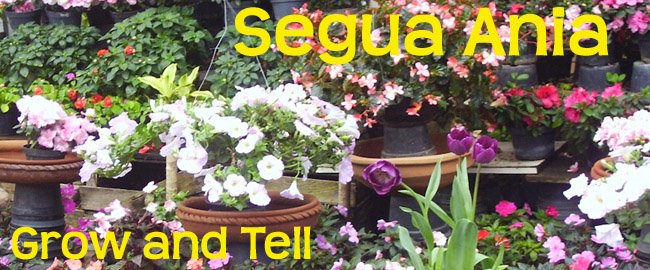If it wasn't such a darn-tooting important part of the whole process I would not be so obsessed with it. Plus, last year, it took me an HOUR to water the plants, not to mention the large amounts of water I used. I vowed then that I would become a smarter waterer.
My watering strategies this year are:
- Using rainwater as much as possible. Rain water is free and rain water is free of stuff such as chlorine and residual pharmaceuticals. Where I live is not heavily industrialized so acid rain is not a big problem. By the way, "pure" rain is somewhat acidic, with a pH of about 6 because of the effects of carbon dioxide; or so it says in Wikepedia. There are discussions on the web about getting your rainwater off the roof of your house. The concerns have to do with the materials the roof shingles are made of and what kind of dust settles on the roof that then gets washed into the rain water. For example, the dust around here is dust from the farms around Wichita. The dust contains pesticides, herbicides and who knows what other "cides". I am considering rigging some kind of temporary water-capturing jig using a tarp and rolling it out whenever rain is in the forecast and rolling it up when it is not.
- Using sub-irrigated planters. I was calling these self-watering containers but the term sub-irrigated seems more applicable. Last year I tested one and I only had to put water in the container once a week, even in the middle of Summer.
- Using watering spikes. Last year I bought plastic watering spikes. This year I complemented those with terracotta watering spikes. The plastic watering spikes released the water too quickly which was my fault because I drilled three holes on each. Now I know that I should have started with one hole. I have not tested the terracotta spikes yet so I don't know how they do in this regard.
While we are on the subject of watering spikes, which you use in conjunction with a 2 littler plastic bottle, I learned this last year: cover the plastic bottle's open end with some kind of fabric otherwise you will be cleaning debris and bugs out of them every day:

Also, because the spikes are relatively expensive, some people use the plastic bottle itself as a watering spike. When I read about this, I immediately thought about taking a needle or pin and making a bunch of tiny holes in the bottle to let the water seep slowly. I read somewhere that the tiny holes often become clogged with tiny particles of soil and the water does not come out.
So, we are advised to make one larger hole. I have not tried this so I cannot vouch for either hole-making technique but the advice seems sound.
When using watering spikes, the idea is to deliver the water directly to the root of the plant and thus eliminate putting water near the surface of the soil where it evaporates and does no one any good.
In a container, the setup would look something like this:

Whether you grow your plants in a container or on the ground, I would recommend that you "plant" your bottle at the same time you plant your plant. Keep in mind where the root of the plant is at now and where it will be in the future and bury the bottle accordingly:

Now I need to collect as much rainwater as possible. I've seen numerous home-made rain barrel designs on the web but I am unsure about making my own. There is a guy in Wichita (www.wichitarainbarrels.com) who makes very sturdy rain barrels. I am considering getting one more 50 gallon barrel but we'll see.


Hi David, I think you and I should meet! I am Peter from Wichita Rain Barrels!
ReplyDeleteCheckout the website and email me. WICHITARAINBARRELS.com
Hi Peter! Yeah, we should meet. I am still wanting to buy a barrel from you. Just need to figure out where I am going to put it.
ReplyDeleteemail me at pmd1131@yahoo.com and we can figure things out.
ReplyDelete